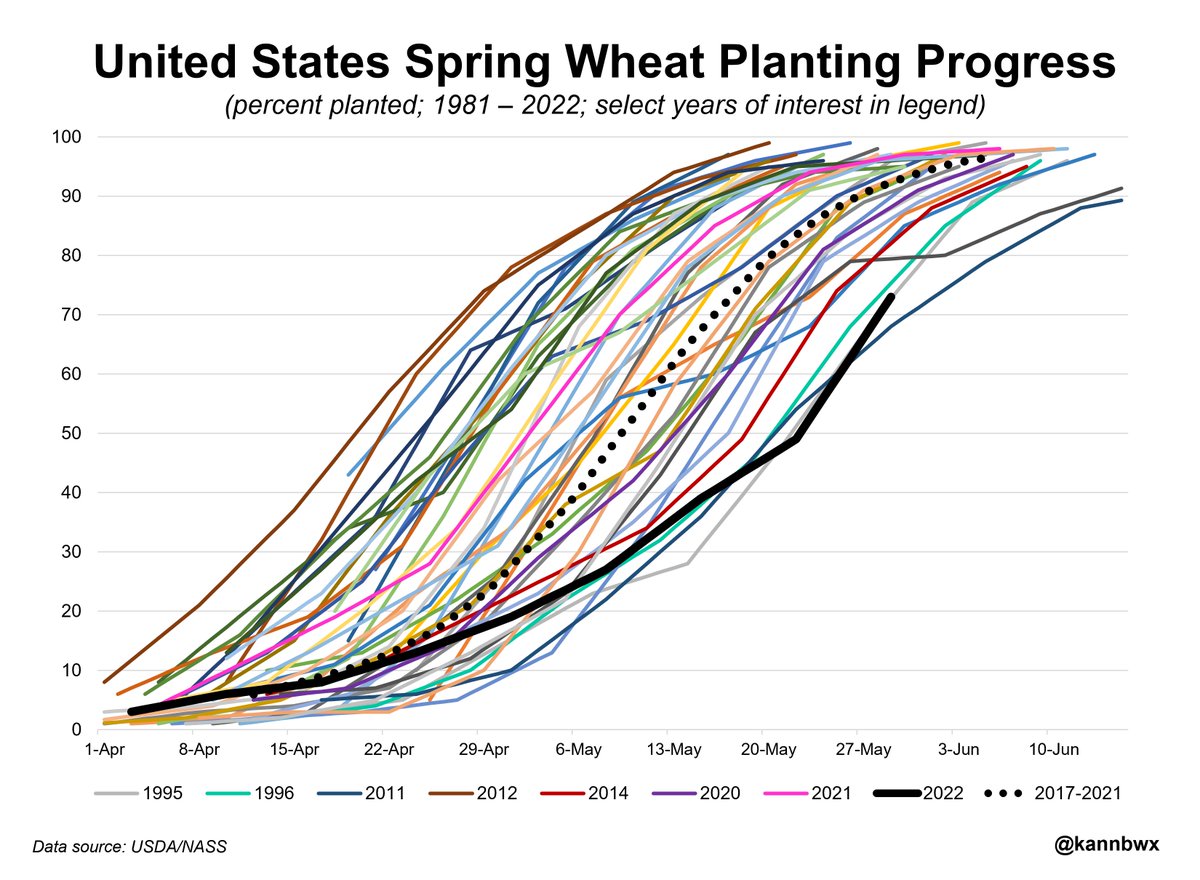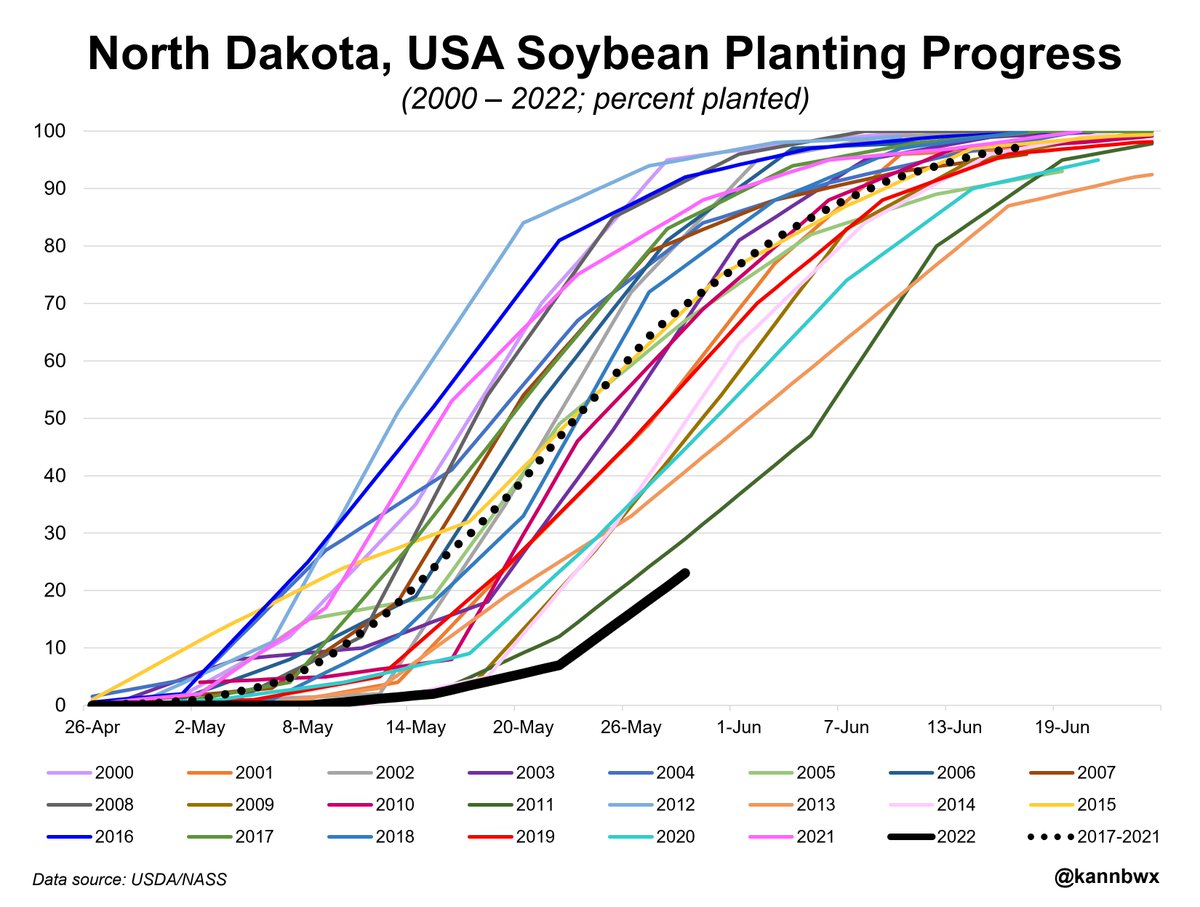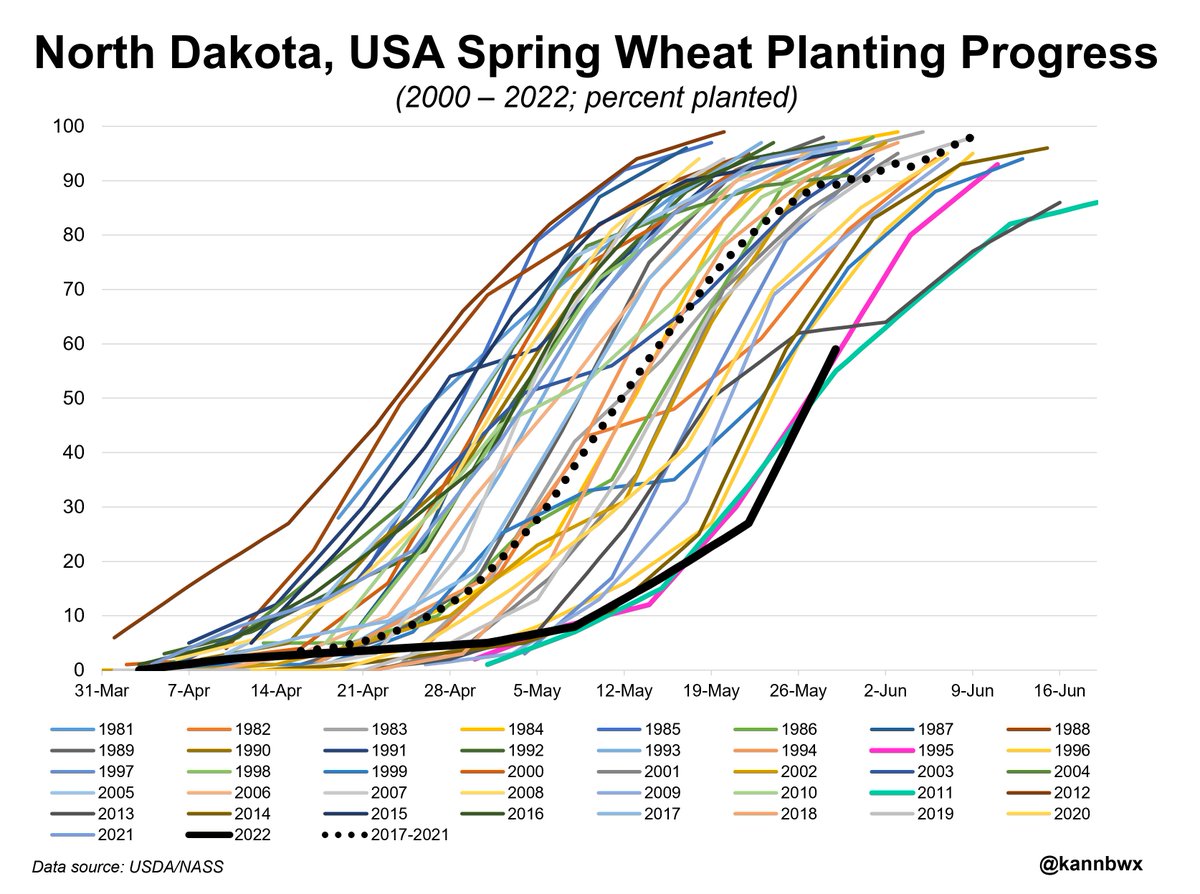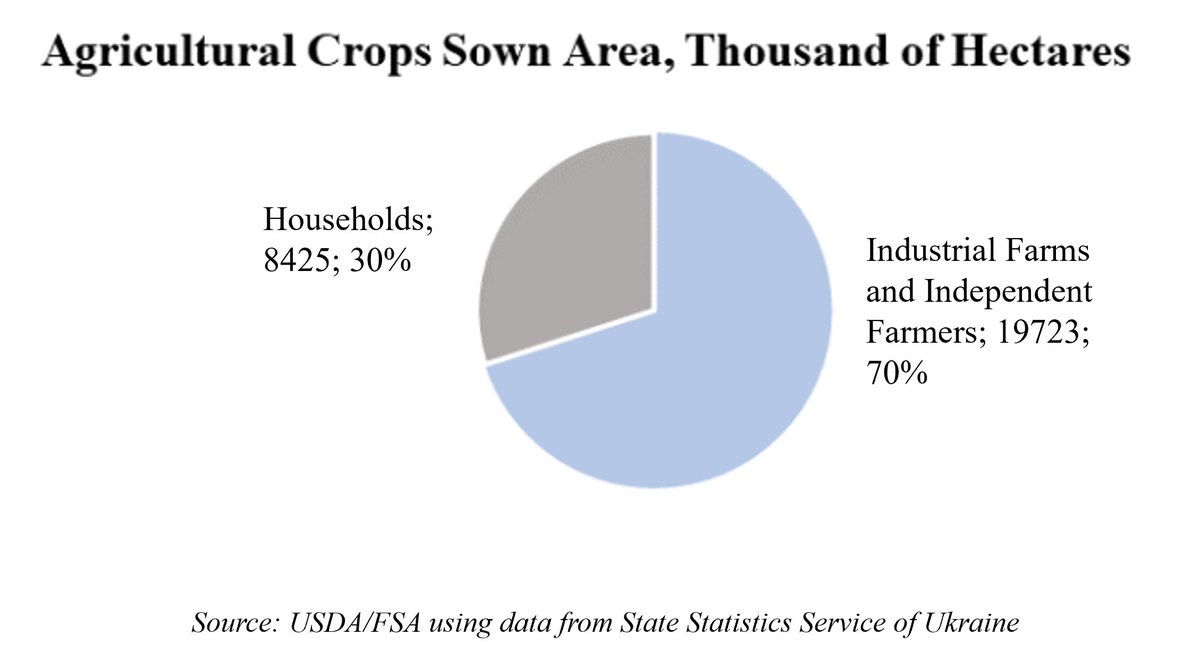
🇺🇸A brief history of U.S. #corn yield growth since the 1860s 🌽 Notable growth in yields was seen after the adoption of modern fertilizers in the 1940s, which made drought years esp. in the 1980s stand out more than before (compare with 1930s Dust Bowl for example). 

I didn't include all possible difference makers on the chart, just the top ones, but there are probably other things I could include. Anyone have suggestions?
This shows just how bad the 1988 & 2012 droughts were (you can also see 1983, 1993, etc in there).
This shows just how bad the 1988 & 2012 droughts were (you can also see 1983, 1993, etc in there).
The first chart makes trend yield look like it's just up up up. But let's zoom in. Look at the last several years. What's really the trend? To me, 181 for 2022 seemed too high (USDA's original "unofficial" before planting delays). Input greatly welcome here, it's been on my mind. 

Also interesting to point out here, although we have made several new records in the last decade, the 1994 and 2004 #corn crops were probably among the most epic in a long time and we haven't seen success like that since. I'm sure expansion of acres/regions could be a factor.
• • •
Missing some Tweet in this thread? You can try to
force a refresh


















